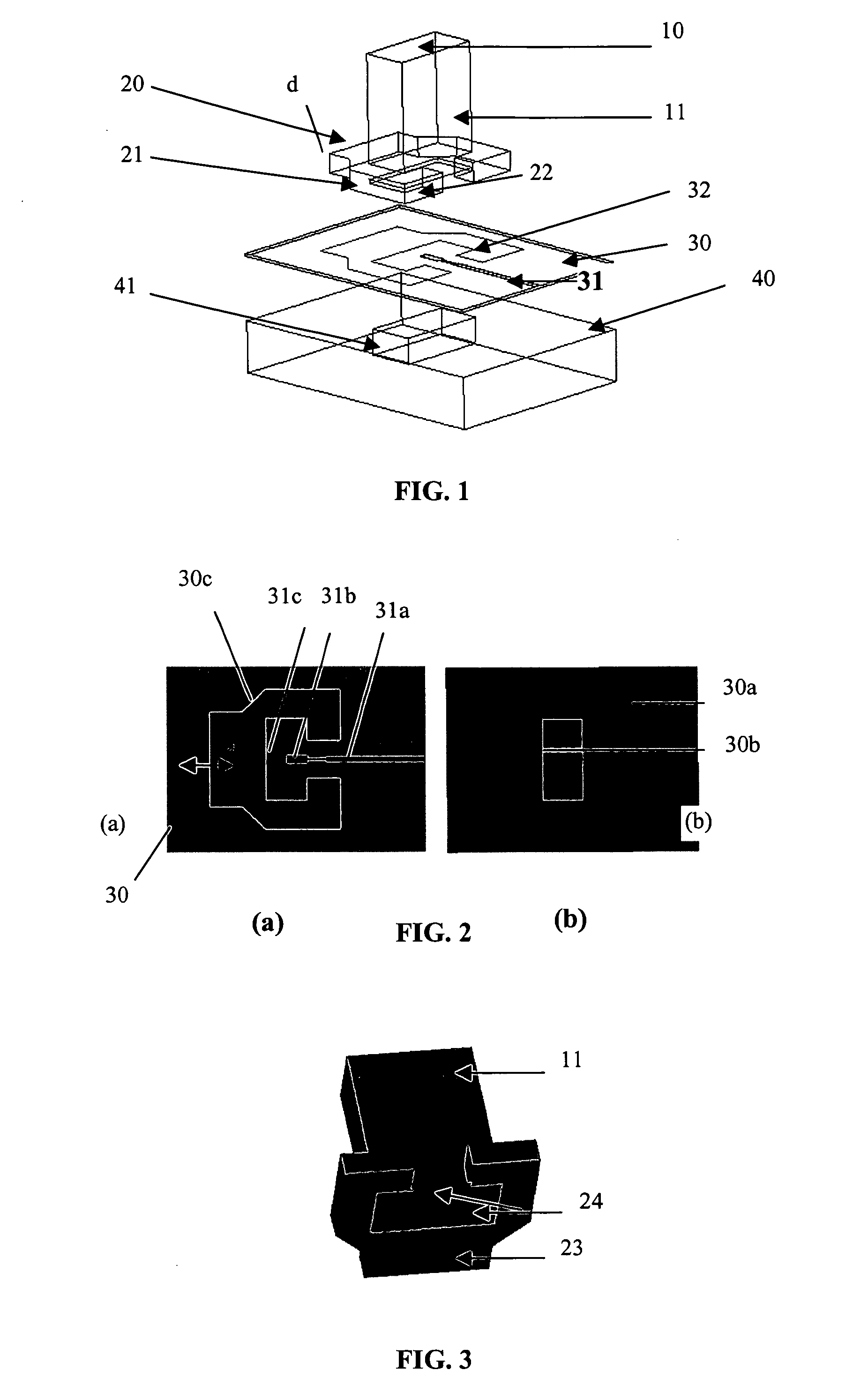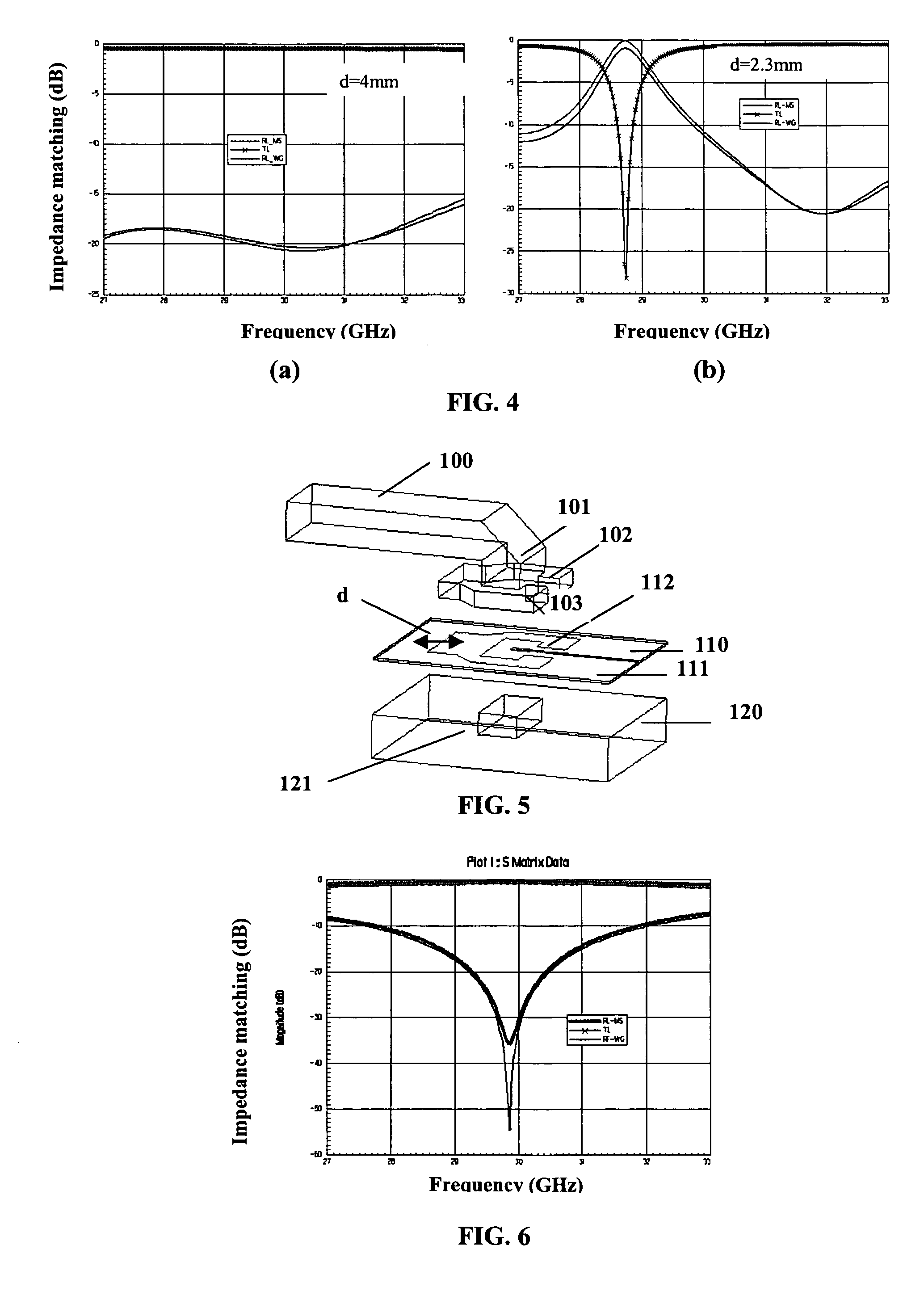Contact-free element of transition between a waveguide and a microstrip line
a technology of microstrip line and waveguide, which is applied in the direction of electrical devices, multiple-port networks, coupling devices, etc., can solve the problems of complex and inflexible embodiments described above, and achieve the effect of limiting the leakage of electrical fields and preventing short-circuits
- Summary
- Abstract
- Description
- Claims
- Application Information
AI Technical Summary
Benefits of technology
Problems solved by technology
Method used
Image
Examples
Embodiment Construction
[0036] A first description with reference to FIGS. 1 to 4 will be made for a first embodiment of an element of transition between a waveguide circuit and a microstrip line realized on a dielectric substrate.
[0037] As shown diagrammatically in FIG. 1, which relates to an exploded view of the element of transition, the reference 10 diagrammatically shows a rectangular waveguide. This waveguide is preferable realized in a synthetic material, more particularly in foam with a permittivity noticeably similar to that of air. The rectangular block of foam is metallized, as referenced by 11, on all the external surfaces so as to realize a microwave waveguide.
[0038] As shown particularly in FIGS. 1 and 3, a flange 20, which presents a noticeable “C” shape, is realized at one end of the guide 10, preferably at the same time as the foam technology waveguide. This flange 20 surrounds the rectangular extremity of the guide 10 on its two smaller sides 21 and on one of its large sides while the o...
PUM
 Login to View More
Login to View More Abstract
Description
Claims
Application Information
 Login to View More
Login to View More - R&D
- Intellectual Property
- Life Sciences
- Materials
- Tech Scout
- Unparalleled Data Quality
- Higher Quality Content
- 60% Fewer Hallucinations
Browse by: Latest US Patents, China's latest patents, Technical Efficacy Thesaurus, Application Domain, Technology Topic, Popular Technical Reports.
© 2025 PatSnap. All rights reserved.Legal|Privacy policy|Modern Slavery Act Transparency Statement|Sitemap|About US| Contact US: help@patsnap.com



